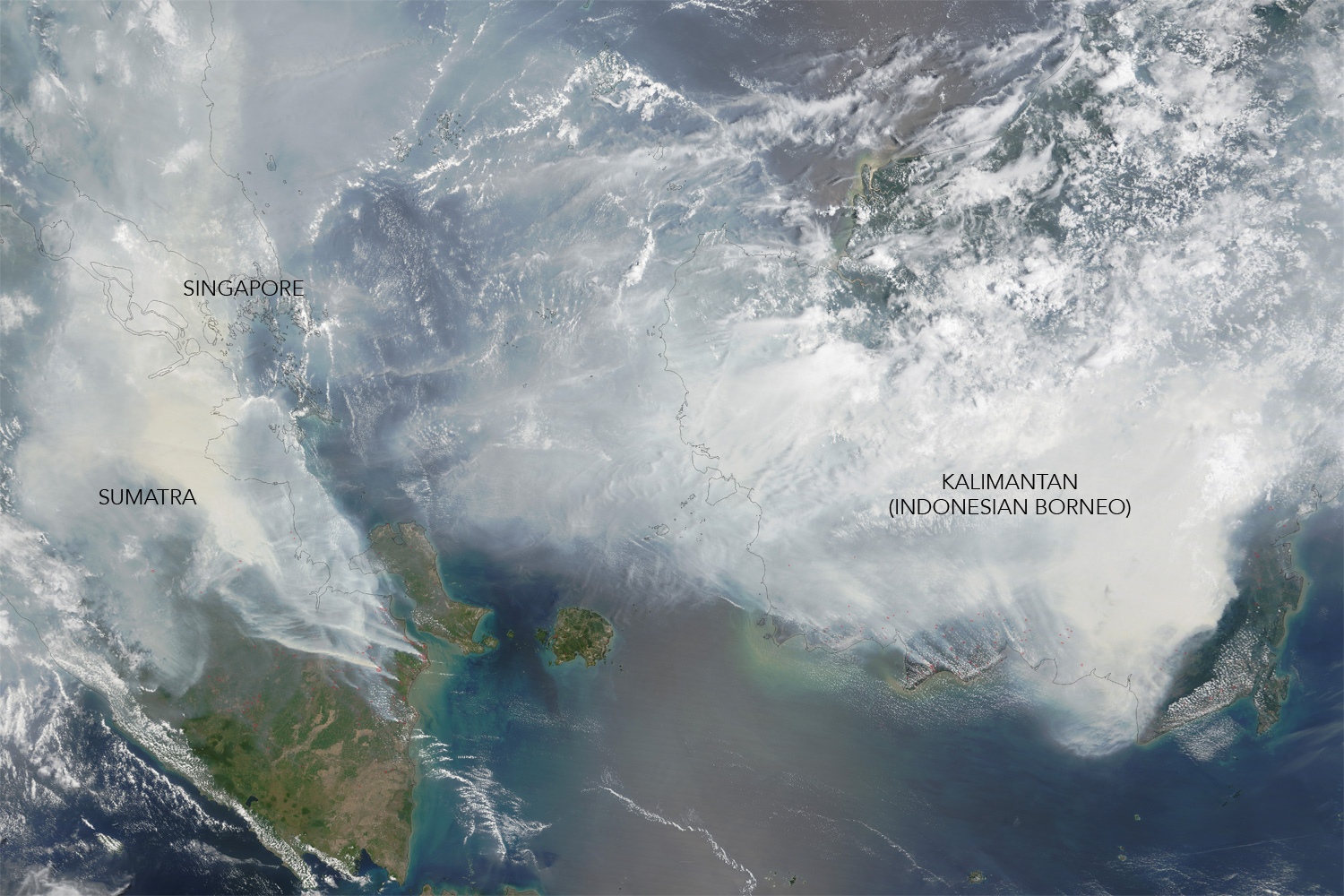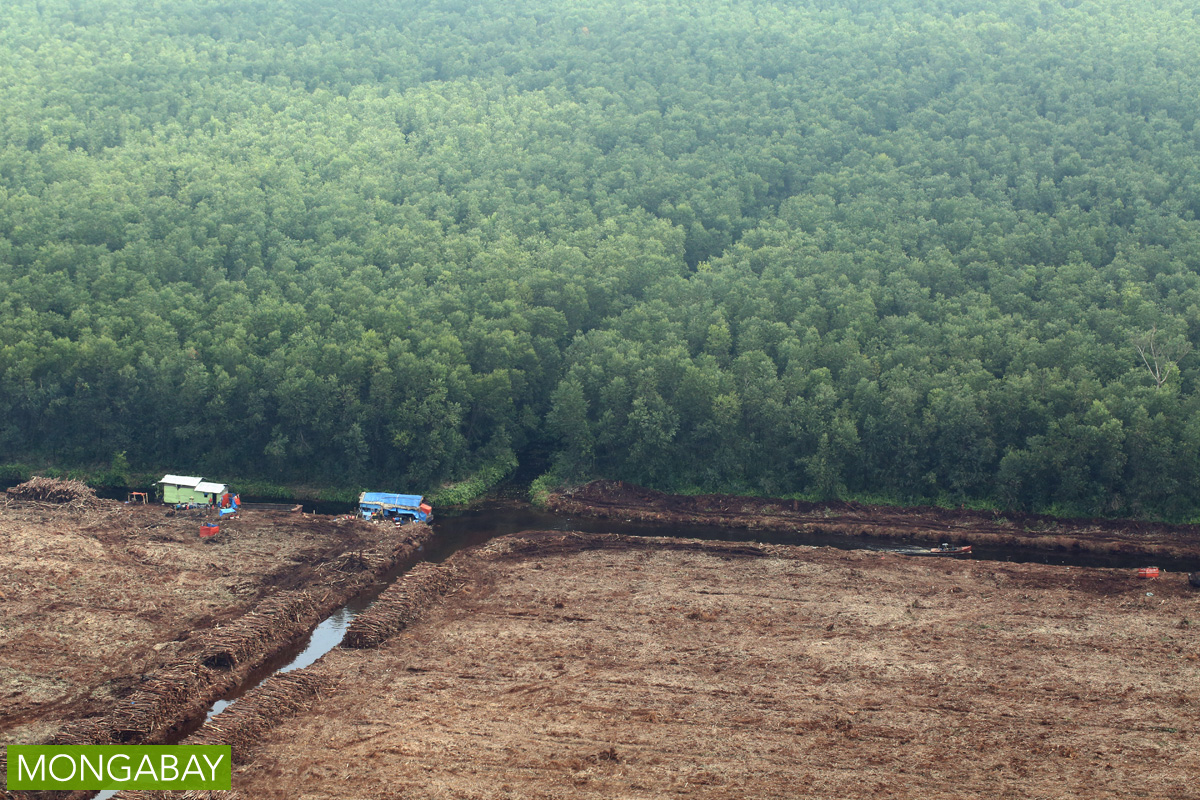- A state of emergency has been declared in six areas of Riau province where fires are flaring.
- The fires are nowhere near as bad as they were last year, but the emergency status will activate additional resources for fighting them.
- Smoke from the fires has not drifted into Singapore or Malaysia because the winds are blowing in the other direction.
The number of hotspots across Indonesia’s forests and peatlands increased to 76 across Kalimantan and Sumatra on Monday as authorities prepared for elevated risks of widespread fires in the coming weeks.
Data from Global Forest Watch show a cluster of fires in the northeastern coastal areas of Riau, across the Malacca Strait from Singapore. Several fires have also burned in East Kalimantan in Berau and Kutai Kartanegara, two districts north of Samarinda, the provincial capital.
Indonesia’s meteorological agency (BMKG) said on Monday it expected particularly dry weather in March and April, increasing risks of a destructive early burning season just a few months after Indonesia suffered the worst environmental catastrophe since 1998. Last year’s fires burned through 2.6 million hectares of forest and peatland, causing devastating wildlife loss and sickening hundreds of thousands of people with respiratory illnesses.
Luhut Panjaitan, Indonesia’s most-senior minister for home affairs, said the government would look to release emergency funding at the earliest opportunity.
“Last year we admit that we were slow to declare [an emergency] on the fires,” he said on Monday. “This year we will immediately [declare an emergency] so that funding can go straight to the scene.”

Indonesian newspaper Tribun reported data from Indonesia’s forestry ministry on March 14 indicating 315 hectares of land had burned in Dumai, a coastal regency north of Pekanbaru. Riau province declared a state of emergency in six areas on March 7—Bengkalis, Dumai, Meranti, Pelalawan, Rokan Hilir and Siak.
Acting Riau Governor Arsyadjuliandi Rachman issued the alert in part to enable the province to call on additional firefighting resources at the earliest opportunity. The daily Kompas said Rachman had informed Willem Rampangilei, the head of Indonesia’s disaster agency, of the emergency status. He said the agency’s provincial office needed the national headquarters to provide a helicopter for firefighting.
Speaking in Jakarta at a forestry seminar on Monday, Luhut said President Joko “Jokowi” Widodo had ordered the relevant agencies to speed up their responses as soon as fires and hotspots first emerge. Luhut said military, police and other public officials risked dismissal if they failed to coordinate and implement policies designed to stop the fires.
A Kompas report on a meeting attended by Riau’s acting governor on March 7 sheds light on some of the difficulties in bringing together agencies of government that have a history of overlapping responsibilities and competing priorities.

Maj. Gen. Lodewyk Pusung, an army commander in Bukit Barisan, said forestry ministry officials were not doing enough to prevent fires from starting.
Lodewyk has also said his officers are prepared to shoot people found starting fires in the legs “to stop them from escaping.”
Meanwhile in the province, the Indonesian Forum for the Environment (Walhi) has filed a lawsuit in Pekanbaru.
“Forest fires have been going on for 18 years,” said the NGO’s provincial chief, Riko Kurniawan. “For too long, the people of Riau have been forced to breathe in polluted air because of haze from forest fires.”
He added that according to Walhi’s analysis, of the 624 hotspots Riau had seen so far this year, more than half had occurred on company land.
“Some have also taken place on ‘community’ land, but with quotation marks because this is land belonging to people with at least 50 hectares. We call these people cukong,” he told Mongabay, a reference to fly-by-night businesspeople from cities like Pekanbaru.













